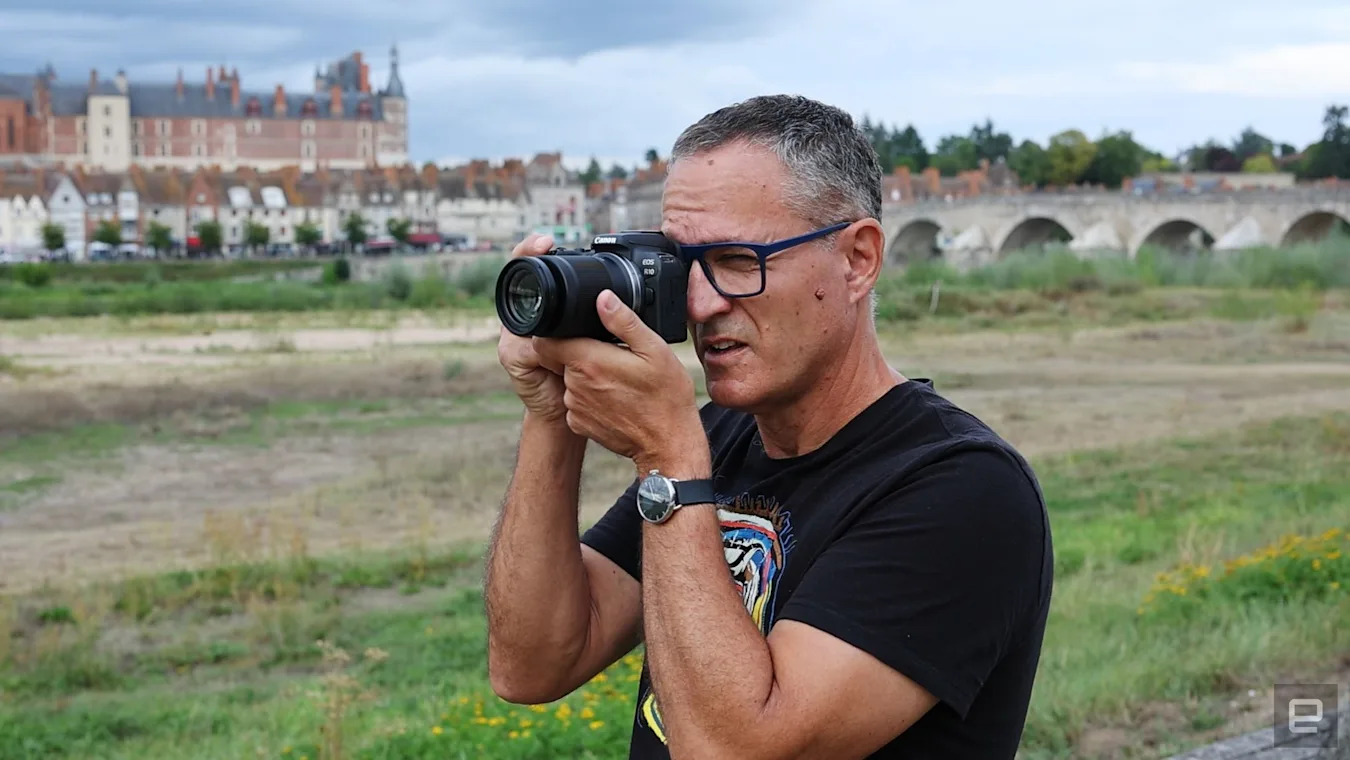Image Credit: Steve Dent/Engadget
The best feature of this camera is the AI-powered Dual Pixel autofocus that’s similar to what you find on the R7 and even the professional EOS R3. It allowed me to keep fast-moving subjects in focus, either by keeping the AF point on them or using face and eye tracking. You can track people, animals and vehicles, but it doesn’t really support tap-to-track like other Canon models.
With people or animals it’ll fluidly track the head or eyes, and does a great job of switching between the two seamlessly. For racing vehicles, it attempts to focus on the helmet of the driver. The system is responsive, reliable and nearly idiot-proof, smoothly tracking subjects whether you’re in point or wide area AF modes. That makes it great for beginners who may not want to dive into the manual to figure out complex settings for subject tracking.
Image quality
Gallery: Canon EOS R10 image gallery | 31 photos
Gallery: Canon EOS R10 image gallery | 31 photos
The R10 delivers accurate colors with warm skin tones like most photographers want. JPEGs strike a good balance between sharpening and noise reduction, while RAW files deliver decent but not spectacular dynamic range. That allows for a good amount of room to tweak images.
Low-light performance is a weak point, however. You can consider ISO 6400 to be a hard limit, and even then, you’ll get a lot of noise if you try to boost blacks on underexposed shots. ISO 12,800 is possible in a pinch, but I wouldn’t recommend it if you need a clear photo. The lack of in-body stabilization also means you’ll risk getting blurry photos at shutter speeds under 1/100th, unless your hands are spectacularly steady.
As I frequently forgot, though, the R10 does have a built-in flash that’ll let you at least get a clear though not very artistic photo if you don’t have enough light. Just make sure to dial the flash strength down in the settings to avoid blowing out your subject.
Video
Steve Dent/Engadget
The R10 is one of the best APS-C cameras for video. You get sharp, downsampled 4K at 30 fps or less, and cropped video at 60 fps that’s not as sharp but certainly still usable. If you want super slow, it can shoot at 120 fps at 1080p, but video is obviously softer still.
It’s also the only sub-$1,000 APS-C camera I can think of that offers 10-bit video via the HDR PQ mode. However, unlike with most log video, you won’t find a standard lookup table (LUT) for this in Adobe Premiere or other editing systems. So unless you play the video directly to an HDR TV, it can be tricky to work with.
Autofocus isn’t quite as good for video as for photos, as the system occasionally focuses on the background instead of the subject. That doesn’t happen often though, so the video I shot was usually sharp except in a few cases.
The lack of in-body IS means you’ll need to use stabilized lenses for handheld video. And for anything like vlogging, you’ll also want to turn on the electronic stabilization or even use the enhanced IS. Electronic IS adds a significant crop, on top of the 1.6X APS-C crop, so the two kit lenses are just barely wide enough on the 18mm end of the zoom.

Steve Dent/Engadget
Vlogging at 60 fps adds another degree of difficulty, as you get a further 1.56x crop, so the 18mm lens becomes nearly a 50mm lens. While vlogging, I found I could barely fit my head into the frame, even while using a Joby Gorillapod to add some extra arm length.
Rolling shutter can also be an issue, particularly for oversampled 4K 30p video, though it’s far less severe than in Sony’s APS-C cameras. It improves in 4K 60p mode because there’s less sensor to read out, but again, you’re facing a serious crop and softer footage.
As with photos, video quality is excellent with dynamic range on par with rival cameras, though a bit less than what Sony has on offer. The oversampled video is very sharp and again, colors are precise and skin-friendly. You can get extra dynamic range shooting in HDR mode for sunsets and the like, but again, beware that it requires some work to look any good.
wrap up

Steve Dent/Engadget
The $980 EOS R10 is a solid start for Canon’s budget crop-sensor RF cameras. It has awesome shooting speeds, excellent autofocus, good image quality, nice handling, a flip-out display and solid video capabilities.
There is room for improvement, though. It’s not as huge a leap as I’d hoped over Sony’s $900, two-year-old A6400. And while it has 10-bit capability and better autofocus than Fujfilm’s $900 X-T30 II, the latter is better overall for video and has slightly higher resolution. It’s also a bit too expensive to qualify as a true budget camera.
Still, this camera is bound to appeal to users who want to step up from a smartphone and are tempted by Canon’s solid reputation. They won’t be disappointed with the R10, because it’s easy to use and delivers where it counts with sharp, nice-looking photos and video.
All products recommended by Engadget are selected by our editorial team, independent of our parent company. Some of our stories include affiliate links. If you buy something through one of these links, we may earn an affiliate commission. All prices are correct at the time of publishing.
